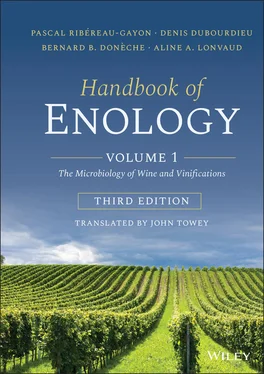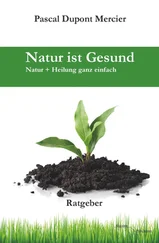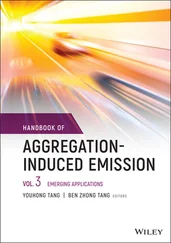6 Chapter 6FIGURE 6.1 Evolution of lactic acid bacteria population during winemaking.FIGURE 6.2 Influence of molecular SO 2concentration on lactic acid bacteria ...FIGURE 6.3 Evolution of different compound concentrations during fermentatio...FIGURE 6.4 Evolution of yeast and lactic acid bacteria ( O. oeni ) populations...FIGURE 6.5 Effect of lactic acid bacteria on the evolution of the yeast popu...FIGURE 6.6 Effect of must pH on the evolution of lactic acid bacteria popula...FIGURE 6.7 Electron microscope photograph of O. oeni phages. FIGURE 6.8 Evolution of phage and lactic acid bacteria populations during ma...
7 Chapter 7FIGURE 7.1 Products of incomplete oxidation of glucose.FIGURE 7.2 Degradation of glucose by acetic acid bacteria (hexose monophosph...
8 Chapter 8FIGURE 8.1 Sulfur dioxide binding curves as a function of the chemical disso...FIGURE 8.2 The different states of sulfur dioxide in wine (Ribéreau‐Gayon et ...FIGURE 8.3 Sulfur dioxide binding curves for various compounds at a concentr...FIGURE 8.4 Formation of γ ‐ and δ ‐gluconolactone from D‐gluconic ac...FIGURE 8.5 Changes in 5‐oxofructose content as a function of the binding pow...FIGURE 8.6 Oxygen consumption in musts following sulfiting (Dubernet and Rib...FIGURE 8.7 Effect of moderate sulfiting (5–10 g/hl) on alcoholic fermentatio...
9 Chapter 9FIGURE 9.1 Pasteurization units supplied by heating at constant temperature ...FIGURE 9.2 Evolution of oxidation–reduction potential of reduced wines, aera...FIGURE 9.3 Gas injector, diffusing very fine bubbles in wine circulating thr...
10 Chapter 10FIGURE 10.1 Fruit of the grape vine: (a) grape berry at maturity; (b) struct...FIGURE 10.2 Grapevine reproductive cycle.FIGURE 10.3 Factors controlling the induction and initiation phases of inflo...FIGURE 10.4 Flower and fruit evolution during bloom and fruit set (Bessis an...FIGURE 10.5 Developmental stages of the grape berry.FIGURE 10.6 Hormone balance during berry development.FIGURE 10.7 Different grape berry tissues at maturity.FIGURE 10.8 Structures of the grape berry epidermis, hypodermis, and mesocar...FIGURE 10.9 Breakdown of principal constituents inside the grape berry (Poss...FIGURE 10.10 Grape berry nutrient supply (Coombe, 1989).FIGURE 10.11 Biochemical mechanism of sugar penetration and accumulation in ...FIGURE 10.12 Evolution of respiration during grape development (Harris et al FIGURE 10.13 Role of malic acid in the production of energy (ATP) and the fo...FIGURE 10.14 Role of arginine in the nitrogen metabolism of grapes (Roubelak...FIGURE 10.15 Biosynthesis pathways of phenolic compounds (Conn, 1986).FIGURE 10.16 Evolution of phenolic compounds (Darné, 1991) (results expresse...FIGURE 10.17 Biosynthesis pathway of the main grape monoterpenes.FIGURE 10.18 Biosynthesis pathway of other terpenoids.FIGURE 10.19 Average evolution of terpene alcohols during Muscat grape matur...FIGURE 10.20 Evolution of “free” and “glycosylated” linalool concentrations ...FIGURE 10.21 Degradation of carotenoids, leading to the formation of C9, C10...FIGURE 10.22 Average evolution of carotenoids and C13‐norisoprenoids during ...FIGURE 10.23 IBMP biosynthesis pathway in the grape berry. IBHP, 3‐isobutyl‐...FIGURE 10.24 Kinetics of the evolution of contents of 3‐isobuytl‐2‐methoxypy...FIGURE 10.25 Comparison of IBMP contents of three different varietal wines, ...FIGURE 10.26 S ‐conjugates, precursors of the volatile thiols identified in g...FIGURE 10.27 Biosynthesis of cysteine S ‐conjugates and then biotransformatio...FIGURE 10.28 Comparison of variations in stem water potential in a Saint‐Emi...FIGURE 10.29 Correlation between the intensity of water deficit (assessed by...FIGURE 10.30 Correlation between the intensity of water deficit (assessed by...FIGURE 10.31 Ripening rates on three soils in Saint‐Emilion (Merlot Noir, 20...FIGURE 10.32 European viticultural climate zones.FIGURE 10.33 Monthly temperature and rainfall differences with respect to 30...FIGURE 10.34 Phenological behavior of Cabernet Sauvignon and Pinot Noir acco...FIGURE 10.35 Influence of leaf area per unit crop weight on sugar content of...FIGURE 10.36 Biosynthesis pathways of stilbene phytoalexins in the grapevine...FIGURE 10.37 Evolution of resveratrol production in response to infection by...FIGURE 10.38 Evolution of a noble rot attack in a Sauternes vineyard (France...FIGURE 10.39 Sugar assimilation and secondary product formation during a nob...FIGURE 10.40 Influence of vintage on noble rot quality, expressed by the gly...FIGURE 10.41 Evolution of saturated lactones (γ-octa-, nona-, deca-, dodeca-...FIGURE 10.42 Evolution of S ‐conjugates of cysteine and glutathione in Semill...FIGURE 10.43 Minimum values of water activity for the growth of epiphytic mi...FIGURE 10.44 Relationship between sugar degradation and berry dehydration ac...FIGURE 10.45 Evolution of gluconic acid concentrations in grapes during deve...FIGURE 10.46 Oxidation reaction of syringaldazine catalyzed by laccase.
11 Chapter 11FIGURE 11.1 Principle of lateral strike harvesters (Jacquet, 1983).FIGURE 11.2 New lateral strike harvester models (Vromandt, 1989): (a) flexib...FIGURE 11.3 Lateral strike harvester (Vromandt, 1989).FIGURE 11.4 Different harvest transport containers (Ribéreau‐Gayon et al ., 1...FIGURE 11.5 Principle of reverse osmosis (Guimberteau et al ., 1989). A, conc...FIGURE 11.6 Plate membrane module for reverse osmosis: (a) schematic diagram...FIGURE 11.7 Protease mode of action by hydrolysis of peptide bonds.FIGURE 11.8 Mode of action of different pectolytic enzymes: (a) pectinestera...FIGURE 11.9 Demonstration of the enzymatic hydrolysis of terpene glycosides ...FIGURE 11.10 Enzymatic hydrolysis mechanism of terpene glycosides (Bayonove,...FIGURE 11.11 Enzymatic formation mechanism of aldehydes and C6 alcohols, res...FIGURE 11.12 Mode of action of grape tyrosinase on hydroxycinnamic acids (Ma...FIGURE 11.13 Oxidation mechanisms of healthy grape must by tyrosinase and bo...FIGURE 11.14 Effect of sulfur dioxide on oxygen consumption in musts made fr...FIGURE 11.15 Effect of pectolytic enzymes on the sedimentation speed of whit...
12 Chapter 12FIGURE 12.1 Examples of harvest receiving equipment for red winemaking. (a) ...FIGURE 12.2 Crusher roller design: (a) spiral ribbed rollers and (b) grooved...FIGURE 12.3 Operating principle of (a) a horizontal destemmer and (b) a vert...FIGURE 12.4 Influence of stems on alcoholic fermentation (Ribéreau‐Gayon et ...FIGURE 12.5 Airtight water‐filled tank vent allowing the release of CO 2from...FIGURE 12.6 Self‐emptying tanks: (a, b) self‐emptying by gravity, (c) screw ...FIGURE 12.7 Effect of momentary aeration (by pump‐over operations at differe...FIGURE 12.8 Pump‐over operation, showing must aeration below and skin extrac...FIGURE 12.9 Evolution of color intensity and phenolic content of red wines a...FIGURE 12.10 Evolution of laccase activity, red color (OD 520), yellow color...FIGURE 12.11 Different types of press. (a) Vertical hydraulic press. The sha...FIGURE 12.12 Distribution of ( Z )‐4‐heptenol concentrations (μg/l) in samples...FIGURE 12.13 Separation of organic acids found in wine by paper chromatograp...FIGURE 12.14 Induction of malolactic fermentation in red wine (Cabernet Sauv...FIGURE 12.15 Continuous fermentor: (1) seed evacuation; (2) adjustable‐level...FIGURE 12.16 Anthocyanin extraction and evolution of color intensity accordi...FIGURE 12.17 Ethanol formation in grapes during anaerobic metabolism, accord...FIGURE 12.18 Malic acid degradation during anaerobic metabolism, according t...FIGURE 12.19 Malic acid degradation by the grape berry under anaerobic condi...FIGURE 12.20 Influence of temperature on phenolic compound diffusion in juic...
13 Chapter 13FIGURE 13.1 Enzymatic hydrolysis (pH 3.4 at 18°C 11% ethanol) of different e...FIGURE 13.2 Theoretical diagram of the evolution of Sauvignon Blanc grapes d...FIGURE 13.3 Continuous juice extraction process.FIGURE 13.4 Whole‐cluster pressing cycle in manual mode with a moving‐head p...FIGURE 13.5 Operation of a closed tank membrane press.FIGURE 13.6 Standard pressing program of a Bucher pneumatic press. T E, T 4, T FIGURE 13.7 Influence of must oxidation on 4MMP concentration in Sauvignon B...FIGURE 13.8 Oxygen consumption kinetics of a healthy Colombard must (— ● —) ...FIGURE 13.9 Oxidation of (a) Colombard and (b) Ugni Blanc must (Rigaud et al ...FIGURE 13.10 Influence of must turbidity on the formation of light volatile ...FIGURE 13.11 Influence of must turbidity on yeast populations during alcohol...FIGURE 13.12 Example of the correlation between turbidity expressed in NTU a...FIGURE 13.13 Evolution of the total polysaccharide concentration in white wi...FIGURE 13.14 Evolution of the yellow color (OD 420) of a wine tank aged on t...FIGURE 13.15 Proportions of ellagitannins of a barreled wine aged on lees or...FIGURE 13.16 Pinking sensitivity determination of a white wine 24 hours afte...FIGURE 13.17 Influence of the aging method on the oxidation–reduction potent...FIGURE 13.18 Influence of stirring on the oxidation–reduction potential of b...FIGURE 13.19 Evolution of light sulfur‐containing compounds in barrel‐fermen...FIGURE 13.20 Evolution of light sulfur‐containing compounds in white wine on...FIGURE 13.21 Evolution of light sulfur‐containing compounds in a tank‐aged w...FIGURE 13.22 Evolution of H 2S and methanethiol concentration in a tank‐aged ...
Читать дальше












